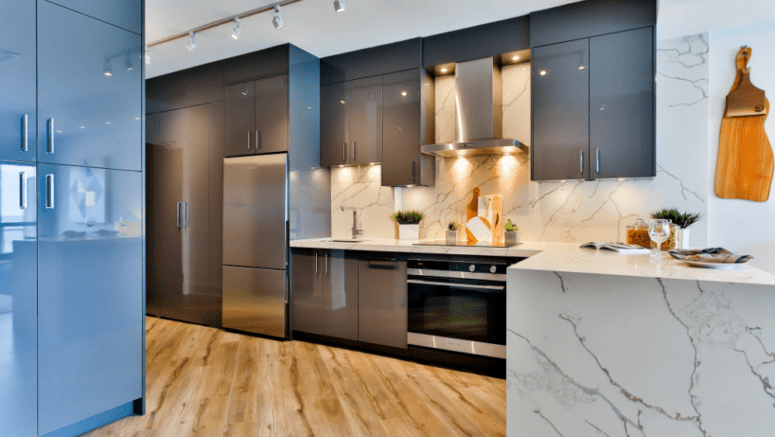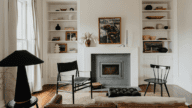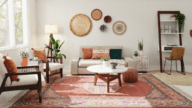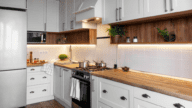Kitchen Staging Tips to Make the Heart of the Home Look Spacious and Bright
- Published on
- 8 min read
-
Maria Hunt,CloseMaria Hunt
Maria is a content strategist and journalist with over 25 years of experience. Her work has been published in the San Diego Tribune, Houzz, Rodan + Fields, Forbes Travel Guide, and more. She graduated from Northwestern University.
-
 Taryn Tacher, Senior EditorClose
Taryn Tacher, Senior EditorClose Taryn Tacher Senior Editor
Taryn Tacher Senior EditorTaryn Tacher is the senior editorial operations manager and senior editor for HomeLight's Resource Centers. With eight years of editorial and operations experience, she previously managed editorial operations at Contently and content partnerships at Conde Nast. Taryn holds a bachelor's from the University of Florida College of Journalism, and she's written for GQ, Teen Vogue, Glamour, Allure, and Variety.
The kitchen is more than just a functional space; it’s the heart of a home. It’s where morning routines begin, family meals are shared, and stories are exchanged over late-night snacks.
But the kitchen’s central location also makes it a room-sized junk drawer with mail, keys, cords, chargers, and seldom-used appliances scattered about. These items distract from your kitchen’s potential and buyers’ ability to envision themselves cooking their favorite pasta dish or entertaining guests with appetizers and wine.
When it comes to selling a home, a well-staged kitchen can elevate a property’s appeal, drawing in potential buyers and setting the tone for a faster sale. All you need to do is keep it simple with tasteful, decorative touches.
With clear countertops and strategically placed decor, a beautifully staged kitchen not only emphasizes the space’s full potential but also evokes a sense of warmth and hospitality.
Declutter the countertops
Tanya Endicott, a top real estate agent in the Dallas area, says one of the top complaints she hears from buyers is that the kitchen is too small. “You want the counters as bare as possible because you want to emphasize how much counter space you have in your kitchen,” she advises.
So the first step in staging your kitchen is to declutter. That means everything on your countertops must go; anything that you put back on will be for the purposes of staging, not storage.
Start by removing stacks of paperwork and organizing bills, mail, and personal cards into a storage option like a file folder or drawer. Collect any phone or computer chargers and put them all in the same storage bin.
Next, put away the items you might not recognize as clutter but are nevertheless making your kitchen look smaller: the paper towel holder, knife block, banana hammock, and blender are all items that don’t need to be on display.
You’ll also want to remove your everyday appliances like a coffee maker and toaster from the counters for showings, but since you’re still living there, be sure to clear out some prime kitchen cabinet space, so that you can easily access and use them as needed.
Depersonalize your fridge and kitchen walls
Take a look at your refrigerator doors and walls. Are they covered with family photos or items that are very specific to your individual taste, such as religious sayings, sports memorabilia, beer openers or a calendar featuring pictures of your dog?
Put all of your fridge photos and magnets in a plastic bag and store it away in a drawer for safekeeping. Take down and store all of your kid’s art, monogrammed towels and wall hangings, and put them in bins labeled accordingly, so you can keep everything organized.
“There has to be less of you, and enough room for somebody to see themselves in that house,” says Endicott.
Give every surface in the kitchen a scrub down
Next, you need to deep clean all of the surfaces in your kitchen. Be sure to wipe down the outside of cabinets and the countertops with a cloth and solution like Mrs. Meyers All-Purpose Cleaner to give the space a fresh, aromatherapeutic scent.
Wipe down the fridge inside and out and remove any grime that’s built up. Scrub the sink, and be sure to remove any hard water stains. Pro tip: the Mr. Clean Magic Eraser works great if you have a white sink.
Get rid of burnt food stains on the stove with a cooktop scrubbing pad and Bar Keepers Friend Cleanser & Polish. If you have a ceiling fan, dust the blades.
Lastly, don’t forget to mop the floors. The Swiffer Dry + Wet Sweeping Kit is great for between showings.
Make small kitchen upgrades
Once you’re working with a blank canvas, you can make small upgrades and add in decorative items to stage your kitchen like a showroom. Here are five ideas from professional stagers to inspire your own kitchen staging plan.
1. Update your cabinets in a trending color
The average cost to replace kitchen cabinets is nearly $6,000, according to HomeAdvisor. Even refacing your cabinets will cost you thousands — about half the price of a full replacement.
Skip the pricey remodel before you sell, and instead opt for some fresh paint. While a coat of white paint on old cabinets can work wonders, don’t be afraid to dabble in color.
“I absolutely love seeing navy blue on the lower cabinets when the uppers are white,” says stylist Linda Graveline of Eleven Interiors in Los Angeles. “And mint green is really popular right now.” Earthy green, mustard and lilac are also trending lately.
Painting your cabinets will cost you in time, however, as it requires careful prepping and special application of a primer before you can even dive into the paint job itself.
Whatever color you select, be sure to pick a paint with a hard finish — like a semigloss, gloss, or satin — so that it stands up to normal kitchen wear and tear.
For more on how to prep and paint your cabinets, check out this great step-by-step guide from Remodelista, a popular and trusted online resource for home design enthusiasts.
2. Swap outdated knobs and pulls with fresh hardware
Dated knobs and drawer pulls are features you don’t even realize are dragging down your kitchen vibe until you replace them with brand new matching hardware across the entire room, and it instantly looks more put together.
This can be a simple project if the new hardware you select lines up with the same holes as the old hardware, so it’s just an easy swap.
If you’re trying to put knobs where drawer pulls were, or vice versa, then you’re going to be left with visible holes. In that case, you need to fill in and paint over any holes, which adds another layer of complexity.
3. Add colorful accessories to bring life and warmth to the space
Interior designer Sarah Robertson of Studio Dearborn in New York recommends spicing up a neutral kitchen by adding pops of color.
Choose a shade that works with the adjoining rooms and then use it in your flower, pillow, and dish selections.
“Think about the kitchen more like a living space. Add in decorative elements like wood bowls and plants, and maybe hang a painting on the wall — even if it’s small,” adds Jean Stoffer, an interior designer based in Grand Rapids, Michigan. “It doesn’t have to be food or kitchen-related; it doesn’t have to be a picture of fruit.”
Stoffer also suggests replacing kitchen mats with woven rugs or a bare polished floor, displaying wooden cutting boards, and putting dish soap in a chic amber glass pump.
4. Organize your pantry and shelves
Stylist Linda Graveline of Eleven Interiors in Los Angeles likes shopping Home Goods and H&M for affordable storage options like metal baskets and wooden crates.
Organize your products by color to create a cohesive look inside your pantry and cabinets. Be sure the fridge is sparkling clean and arrange it in a similar, organized fashion.
5. Remove the screens before taking photos to maximize natural light
Having a kitchen with a lot of natural light is important for many buyers because it makes the space feel inviting and warm.
You can maximize the amount of light coming through the windows by removing window screens in the kitchen before you take your listing photos.
“Screens block 40% of the light coming through the window, so it makes a huge difference,” says Robertson, whose kitchen design photos have been saved thousands of times on Houzz.
Should you DIY or hire a pro to stage your kitchen?
Even if you don’t have a kitchen with a view, decluttering, deep cleaning and making little upgrades will help you show off your kitchen’s best features and charm potential buyers
As for whether you should stage it yourself or hire a professional: That all depends on your design skills and budget. If you have an innate sense of design, a DIY approach might save you money and allow for a personal touch. However, the expertise of a professional stager can provide a polished look that caters to the current market trends and buyer preferences.
Whichever route you choose, remember that the goal is the same: to present a kitchen that resonates as both functional and inviting, a space where new homeowners can readily envision their daily routines and cherished moments.
Article Image Source: (Sidekix Media / Unsplash)






